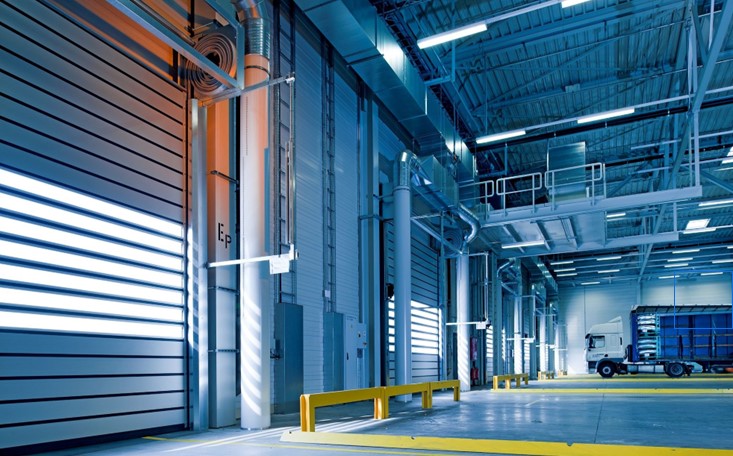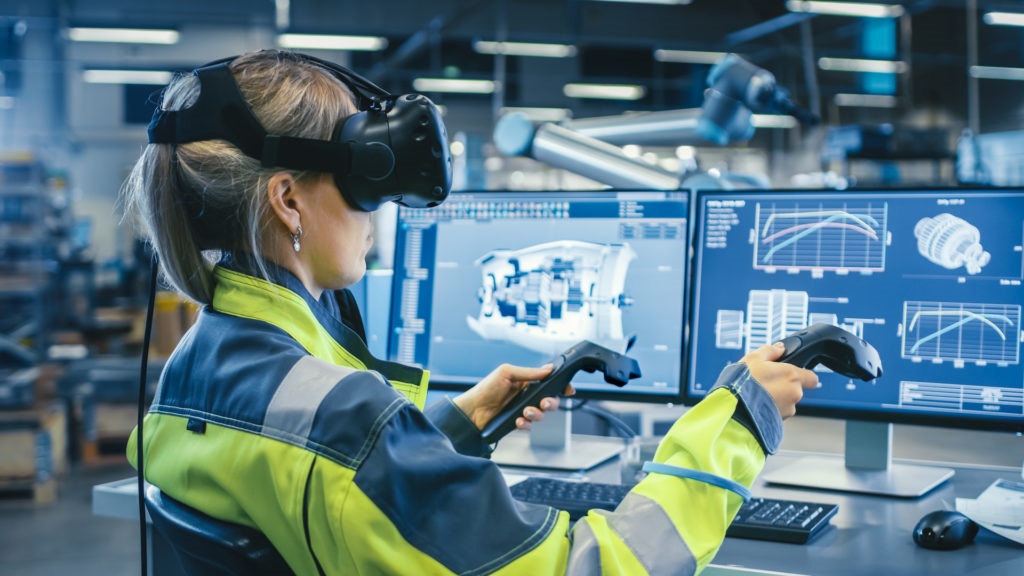Working as a business analyst, I have had to deal with various projects in different industries. I have participated in projects to implement systems like ERP (Enterprise Resources Planning), WMS (Warehouse Management Software), DMS (Document Management System), and MES (Manufacturing Execution System). The mentioned industries are food, chemical, pharmaceutical, and medical industries.
All of those projects had one denominator in common, which is manufacturing (well… except maybe the medical industry, where the implementation consisted of supporting document management in administration). ERP systems are so extensive that they have the aforementioned tools as integrated modules and are also often a “boxed” solution, i.e. for sales without the possibility of expansion.
As a result, when deciding to expand their business management support tools, a lot of companies opt for solutions from third-party vendors who develop dedicated software. While ERP, WMS, and DMS systems are desired by companies and are readily implemented, MES systems are often replaced by traditional Excel sheets and pieces of paper on production lines.
From my observations, these systems are not appreciated by the market, and if they are, then only by the companies that are aware of the benefits coming from their implementation. This is often related to the costs of system implementation, which, willy-nilly, has to be connected to an automation system at different levels of sophistication, which generates additional investment costs.
Companies that want to:
- improve plant efficiency,
- increase machine availability,
- reduce machine downtime,
- increase work efficiency,
having a machine park in the current state, often, after deeper reflection, decide to implement such a project. In the era of Industry 4.0, and the currently proclaimed version 5.0, I will try to present why, in my opinion, it is worth investing in MES systems.
What is this MES?
MES is short for Manufacturing Execution System. It is an IT system, combining automation elements, that is used for continuous monitoring of production processes and obtaining information about their status and quality. Data on the production in progress is collected and delivered to the user in real-time, which makes it possible to react immediately to any undesirable phenomena, such as unplanned downtime, failure, or decrease in productivity. This data is organized contextually and delivered to end devices (such as HMI panels, web browsers, or industrial computers) in the form of reports and analysis.
Unlike an ERP system, whose resolution oscillates around a production shift, an MES system collects data with much greater accuracy.
It is very important that MES systems are an intermediate layer, synchronizing layers:
- production (automation, control, sensing, and everything else that is in production),
- business, including ERP systems and also higher-level systems, i.e. systems for planning, scheduling, human resources, production accounting, invoicing, etc.
ISA 95 standard
MES systems are described by the ISA 95 standard. It’s basic principles concern the creation of interfaces, providing connectivity to control systems, and ensuring good communication between the previously mentioned layers of the manufacturing enterprise.
What features does the MES system have?
It is time to list the main functions that are essential to this class of system:
- tracking and visualizing production in progress in real time,
- monitoring the actual time and productivity of machines and people:
- ongoing calculation and updating of OEE (Overall Equipment Effectiveness) and OLE (Overall Labor Effectiveness) indicators,
- monitoring and managing the rate of production,
- informing on the time remaining to complete ongoing and scheduled production orders,
- management of machinery and production capacity:
- tracking downtime (planned and unplanned): recording of causes, time,
- monitoring the current availability of machines,
- visualizing the “machine spectrum”,
- providing information on the total available production capacity and its utilization,
- scheduling production orders and controlling execution at the operational level,
- updating inventory: materials, semi-finished products, final products,
- collecting information on defects and quality of manufactured parts,
- collecting process data,
- ability to exchange data with controllers and visualization systems,
- sending immediate notification of stoppages occurring during production,
- generating automatic reports and detailed analysis of collected information:
- calculating key production metrics, including OEE, machine availability, downtime, failure rate, etc.,
- analyzing and reporting on completed production orders,
- reporting on the consumption of utilities and consumables,
- electronic processing and management of information and records,
- summaries and accounts of indirect costs and direct costs of production,
- product flow tracking, production genealogy,
- planning for inspections and repairs,
- automatic registration of production,
- production and order management:
- management of production orders, automatic registration of orders,
- planning the order of execution,
- production order management support,
- monitoring the consumption and flow of production utilities,
- quality control support:
- providing information on defective products and product deviations,
- analyzing the level of production rejects.
An abbreviated definition of how MES systems work
MES systems can operate in automatic, semi-automatic or manual mode.
- Highly automated systems – used in the automotive industry, where machines provide a complete set of information, and the MES system only checks the basic business logic and, in most cases, registers production from automated processes, giving them additional contexts, such as production order or operator.
- A semi-automatic system – for example, recording a stoppage. The machine sends information to the system that its condition has changed (stopped) and presents the actual stoppage time, and the operator specifies why the stoppage occurred. Another example is when the machine automatically counts good and defective parts, but it is the operator who determines the causes of errors or the quality classes of the products.
- Manual systems – it is the operator who reports when and how the state of the machine has changed. He manually runs the orders and records the products, which is especially applicable in productions with long cycle times. The second scenario is when the work is done manually and there is no physical or technological possibility to read the data automatically. This situation applies, for example, while packing products in master cartons or installing a small, “fragile” component.
Depending on what information has been reported (by the machine or the operator), the system triggers a specific event sequence. For example, if information about a change in the status of a machine has been recorded, the system can simultaneously pass this information to the Maintenance Department and feed it into the scheduling system. If it is a machine stoppage, the work schedule must be changed. If the operator gives a signal that he is starting a work order, the system automatically checks whether all conditions for this work order are met.
An MES system should not operate in isolation from its operational environment. Maintaining a single source is key to keeping data and information consistent. Therefore, MES projects should always be accompanied by integration tasks with the ERP system, as I mentioned at the beginning of the articles, but also with supporting systems such as WMS, CMMS, APS, and any other tool used by the organization and having a real impact on the production process and its management.
Benefits of the MES system implementation
Implementing an advanced MES system brings short and long-term benefits. If the system implementation becomes part of broader changes implemented in the spirit of Lean or Kaizen, the effects can be spectacular.
Among the most frequently listed positive effects observed in the short term, i.e. a 12-month horizon, are the elimination of waste and improvement of production efficiency and quality. Unplanned downtime is reduced, and production data is available at a glance. New contracts won by freeing up the capacity, improved customer service, or faster time-to-market for new products are real benefits recorded by manufacturing companies within the first 2 years of implementing an advanced production management system.
| In the short term: an increase in production efficiency | In the long term: optimization of production |
| shortening the production cycle, reducing lead time, lowering labor costs, reducing costs of data entry, decreasing printing and paper costs, reducing work in progress, greater utilization of the machinery fleet. | improving product quality, increasing customer satisfaction, reducing the time to introduce new products to market. |
Implementing the MES system – pros and cons
Faced with such a choice, it is worth considering what is crucial when deciding to implement MES systems.
There should be a proper motivation behind this decision.
If the system is added to an unstructured, error-laden process layer, this will lead to systemic errors created from process errors, which are even more difficult to control.
In order for an MES implementation to be successful, the following three areas must be worked on parallelly. The motivator must be a need that can be turned into a business goal.
The same need observed from three levels will look very different, for example:
- the operator wants to know what tasks he has to do, when and how he has to do them,
- the operations director will need to know about the company’s capacity and the actual availability of the machinery fleet so that they can plan how many products the production is able to generate during a given shift,
- management is interested in how much value the company is able to produce, and how much it will increase its turnover by eliminating process imperfections.
Maintaining a balance and taking care of communication between these 3 sectors builds a proper flow of information in the company.
When proceeding to implement a system, it is important to realize that it usually affects the way many departments of a company operate, starting with the production, maintenance and quality department, through logistics, planning, IT and management, and ending with the sales and marketing department.
Mistakes made during the implementation, the wrong choice of the system itself or its functionality will affect the company’s operations for years to come. Therefore, system selection and implementation must be carried out very carefully and thoroughly.
MES systems and Industry 4.0 and 5.0 and other trends
Like most IT systems, MES-class systems are also evolving very rapidly. The trend currently determining the development of systems is Industry 4.0. and Industry 5.0 idea, announced at the beginning of 2021, which expands the earlier version by giving social and environmental priorities to the European Union in the field of technological innovation.
As is well known, these concepts include the integration of “smart” machines and systems and the automation of production processes aimed at increasing manufacturing efficiency, making it more flexible, and introducing cost-effective unit production.
That is why MES systems take advantage of the latest technologies, such as IoT (Internet of Things), which task is to provide the broadest possible digital feedback – not only about production processes and operations but also about products that have already been sold to customers.
Another trend, affecting the functionality of MES systems, is the implementation of machine learning technology. Machine learning, by analyzing historical and current data, allows the MES system to predict when problems or failures may occur on the production line . What’s more, modern machines already provide information about the status of equipment, making it much easier to catch upcoming problems.
We can also see a trend related to the automation of MES systems and their deeper integration with production planning systems, i.a.: PLM (Product Lifecycle Management) class tools for product life management, as well as tools used in the design. As a result, information about the successive stages of product development is visualized in real-time and allows proper planning and scheduling of production for individual, customized orders.
It is quite common to see MES systems already developed in a cloud environment.
The reasons for this are:
- much better real-time business analytics capabilities,
- better analysis of large data sets,
- worldwide availability
- support for advanced disaster recovery.
The system implemented in the cloud is not only for large corporations, but also for small and medium-sized companies that do not have an extensive IT infrastructure. Of course, the services offered by cloud providers come into play here, but with a public or hybrid cloud they have the chance to use the latest, most advanced solutions that until recently only the world’s largest companies could afford.
Summary
The MES production area communication and information system is an excellent solution regardless of the field of production. It will work well in both the food and automotive industries. It can be successfully used in micro and macro enterprises.
What will differentiate the system platforms used in different industries is the degree of sophistication. Therefore, the future needs of the plant should be considered as early as the planning stage of the company’s operations. For example, a production management system for the food industry must be developed in terms of expiration dates for specific products. On this basis, the maximum time of each manufacturing stage is developed, as well as the date of consumption of production materials.
One of the main tasks faced by a production management system is to reduce costs and maximize the efficiency of machinery and human resources. The right system separates successive stages of production, which allows to search for bottlenecks, i.e. problematic points in production, inhibiting the efficiency of the process.
The fault leveling, improvement of the quality of work increasing the employees’ standards – it all affects the reduction of operating costs and increases the company’s revenues, allowing for further development and expansion of the company on the market.
When selecting a production management system, special attention should be paid to its compatibility with various devices and the possibility of introducing more variables and expanding the scope of the platform. The MES system should be developed to last for years, and its performance and reliability should not depend on hardware requirements.

















Leave a comment